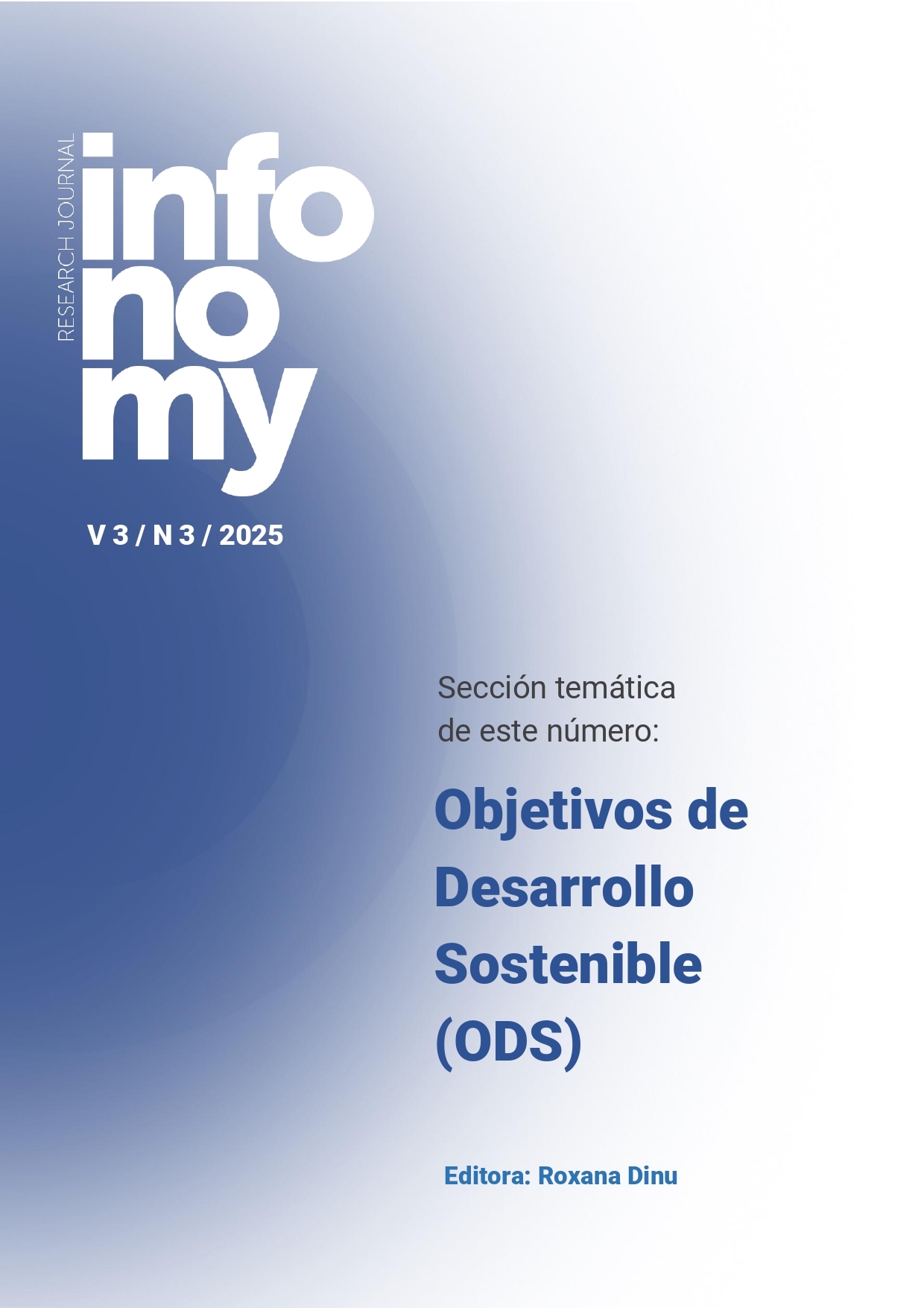Implementation of a campaign to promote active breaks for teenagers and university students
DOI:
https://doi.org/10.3145/infonomy.25.020Keywords:
Descansos activos, Gamificación, Actividad física, Vida saludable, Sedentarismo, CampañaAbstract
This study focuses on a campaign to promote healthy habits among adolescents and university students through active breaks during their academic day. Given the increase in sedentary lifestyles among young people, the main objective was to promote light physical activity to improve physical, mental and academic well-being. The methodology employed included a theoretical review of the concept of active breaks and their effectiveness in educational contexts, as well as the design of a communicative proposal based on gamification, digital tools and social networks to facilitate participation. Three routes with different levels of physical intensity were proposed and resources such as QR codes and Instagram were implemented. The results show a moderate acceptance of the campaign, with barriers such as an initial lack of knowledge of the concept and low participation, but also a positive assessment of its usefulness. The conclusions highlight the potential of active breaks to improve student health and performance, although more institutional support, more effective communication strategies and longitudinal studies are needed to consolidate their impact.References
Alemán-Medrano, Y. D.; Rodríguez-Pineda, V.; Villalobos-Zúñiga, A. L. (2020). Las pausas activas como una estrategia lúdico pedagógica para el mejoramiento de la dinámica de aula en la escuela primaria. Realidad e Innovación Educativa, 1(1), 18-35. https://www.academia.edu/43610258/Realidad_e_Innovaci%C3%B3n_Educativa_Revista_Digital_de_Pedagog%C3%ADa_UCR_Guanacaste
Alòs-Colomer, F.; Puig-Ribera, A. (2022). Inactividad física y sedentarismo. Agència de Salut Pública de Catalunya (ASPCAT), 18(2), 66-75. https://salutpublica.gencat.cat/web/.content/minisite/aspcat/promocio_salut/suma_salut/noticies/activitat_fisica/02_Los-principales-problemas-de-salud_Febrero_22.pdf
Álvarez-Flores, D. A. (2024). La Gamificación en la Educación Física: Revisión Sistemática. MENTOR Revista De investigación Educativa Y Deportiva , 3(7), 225–246. https://doi.org/10.56200/mried.v3i7.6800
Barbosa-Granados, S. H.; Urrea- Cuéllar, Á. M. (2018). Influencia del deporte y la actividad física en el estado de salud físico y mental: una revisión bibliográfica. Katharsis, 25, 141-159. https://dialnet.unirioja.es/servlet/articulo?codigo=6369972
Busse, P.; Godoy, S. (2016). Comunicación y salud. Cuadernos.info. Comunicación y medios en Iberoamérica, 38, 10-13. https://www.scielo.cl/pdf/cinfo/n38/art01.pdf
García-Romero, F. (2003). El deporte en la sociedad griega según las fuentes literarias. Stylos, 12(12), 25-43. https://repositorio.uca.edu.ar/bitstream/123456789/3681/1/deporte-sociedad-griega-garcia.pdf
Gelabert, J.; Sánchez-Azanza, V.; Palou, P.; Muntaner-Mas, A. (2023). Efectos agudos de los descansos activos sobre la atención selectiva en escolares. Revista De Psicología Del Deporte (Journal of Sport Psychology), 32(2), 277–286. https://rpd-online.com/manuscript/index.php/rpd/article/view/1324/528
Gumucio-Dagron, A. (2011). Comunicación para el cambio social: clave del desarrollo participativo. Signo y Pensamiento, 58, 26-39. https://www.redalyc.org/pdf/860/86020038002.pdf
Ildefonso-Arocha R., J. (2019). Sedentary lifestyle a disease from XXI century. Clínica e Investigación en Arteriosclerosis, 31(5), 233-240. https://doi.org/10.1016/j.arteri.2019.04.004
Instituto de las Ciencias de la Salud y la Actividad Física. (2022). Diferencias entre actividad física y ejercicio físico. ISAF. https://blog.institutoisaf.es/que-diferencia-hay-entre-actividad-fisica-ejercicio-fisico-y-deporte
Jiménez-Boraita., R.; Gargallo-Ibort, E.; Dalmau-Torres., J.; Arriscado A., D. (2022). Factores asociados a un bajo nivel de actividad física en adolescentes de la Rioja (España). Anales de Pediatría, 96(4), 326-333. https://doi.org/10.1016/j.anpedi.2021.02.011
Kellmann, M.; Beckmann, J. (2018). Sport, recovery, and performance. Routledge.
Lynch, J.; O’Donoghue, G.; Peiris, C. L. (2022). Classroom Movement Breaks and Physically Active Learning Are Feasible, Reduce Sedentary Behaviour and Fatigue, and May Increase Focus in University Students: A Systematic Review and Meta-Analysis. International Journal of Environmental Research and Public Health, 19(13), 7775. https://doi.org/10.3390/ijerph19137775
Mackenzie, J. S.; Jeggo, M. (2019). The One Health Approach—Why is it so important? Tropical Medicine And Infectious Disease, 4(2), 88. https://doi.org/10.3390/tropicalmed4020088
Martínez-Baena, A. C.; Chillón, P.; Martín-Matillas, M.; Pérez- López, I.; Castillo, R.; Zapatera, B.; Vicente-Rodríguez, G.; Casajús, J. A.; Álvarez-Granda, L.; Romero-Cerezo, C.; Tercedor, P.; Delgado-Fernández, M. (2012). Motivos de abandono y no práctica de actividad físico-deportiva en adolescentes españoles: estudio Avena. Cuadernos de Psicología del Deporte, 12(1), 45-53. https://scielo.isciii.es/scielo.php?script=sci_arttext&pid=S1578-84232012000100005
Ministerio de Sanidad (2015). ¡DAME10! Gobierno de España. https://www.sanidad.gob.es/areas/promocionPrevencion/actividadFisica/entornoEscolar/descansosActivos.htm
Moreno-Villares, J. M.; Galiano Segovia, M. J. (2019). Screen-time: a new stakeholder in children and adolescent health. Nutrición Hospitalaria. 36(6), 1235-1236. https://doi.org/10.20960/nh.02932
Organización Mundial de la Salud (2020). Directrices de la OMS sobre actividad física y hábitos sedentarios: de un vistazo. OMS-Ginebra. https://www.who.int/es/publications/i/item/9789240014886
Organización Mundial de la Salud (2021). Estrategia mundial sobre salud digital 2020-2025. OMS-Ginebra. https://iris.who.int/handle/10665/344251
Organización Mundial de la Salud (2023). Una Sola Salud (One Health). OMS. https://www.who.int/es/news-room/fact-sheets/detail/one-health
Organización Mundial de la Salud (2024). Actividad Física. OMS. https://www.who.int/es/news-room/fact-sheets/detail/physical-activity
Organización Panamericana de la Salud (2019). Plan de acción mundial sobre actividad física 2018-2030. Más personas activas para un mundo sano. Washington. https://iris.paho.org/bitstream/handle/10665.2/50904/9789275320600_spa.pdf
Pastor-Vicedo, J. C.; Martínez-Martínez, J.; Jaén-Tévar, Y.; Prieto-Ayuso, A. (2019). Los descansos activos y la mejora de los aprendizajes en educación infantil: una propuesta de intervención. Sport TK, 67-72. https://doi.org/10.6018/sportk.401131
Pastor-Vicedo, J. C.; Prieto-Ayuso, A.; Pérez, S. L.; Martínez-Martínez, J. (2021). Descansos activos y rendimiento cognitivo en el alumnado: revisión sistemática. Apunts. Educació Física I Esports/Apunts. Educación Física y Deportes, 146, 11-23. https://doi.org/10.5672/apunts.2014-0983.es.(2021/4).146.02
Peláez-Flor, V.; Prieto-Ayuso, A. (2021). Aprendo Moviéndome: programa de descansos activos para educación primaria. SPORT TK-Revista EuroAmericana de Ciencias del Deporte, 10(2), 107–135. https://doi.org/10.6018/sportk.440761
Perea-Caballero, A.; López-Navarrete, G.; Perea-Martínez, A.; Reyes-Gómez, U.; Santiago-Lagunes, L.; Ríos-Gallardo, P.; Lara-Campos, A.; González-Valadez, A.; García-Osorio, V.; Hernádez-López, M.; Solís-Aguilar, D.; De-la-Paz-Morales, C. (2019). Importancia de la actividad física. Revista Médico-Científica de la Secretaría de Salud Jalisco, 6(2), 121-125. https://www.medigraphic.com/cgi-bin/new/resumen.cgi?IDARTICULO=91852
Ríos-Hernández, I. (2011). Comunicación en salud: Conceptos y modelos teóricos. Perspectivas de la comunicación, 4(1), 123-140. https://dialnet.unirioja.es/servlet/articulo?codigo=3750541
Segovia Directo (29 de mayo de 2024). “Des-activa” Experimenta descansos activos en la Uva y gana premios. Segovia Directo. https://segoviadirecto.com/art/51488/des-activa
Sevilla-Sánchez, M.; Dopico-Calvo, X.; Morales, J.; Iglesias-Soler, E.; Fariñas, J.; Carballeira, E. (2023). La gamificación en educación física: efectos sobre la motivación y el. Retos, 47, 87–95. https://doi.org/10.47197/retos.v47.94686
Trinity College Dublin. Healthy Trinity. Trinity College Dublin. https://www.tcd.ie/healthytrinity
University of Toronto (2023). The 3 Minute Movement Break. University of Toronto. https://www.torontomu.ca/recreation/programs/movement-breaks/movement-break-0-3
Weslake, A.; Christian, B. J. (2015). “Brain breaks: Help or hindrance?” Teach Collection of Christian Education, 1(1), 38-46. https://research.avondale.edu.au/teachcollection/vol1/iss1/4
Downloads
Published
How to Cite
Downloads
Dimensions
Issue
Section
License
Copyright (c) 2025 Juan-Camilo García-Giraldo, Álvaro Jiménez-Sánchez, Ana-Teresa López-Pastor

This work is licensed under a Creative Commons Attribution 4.0 International License.




